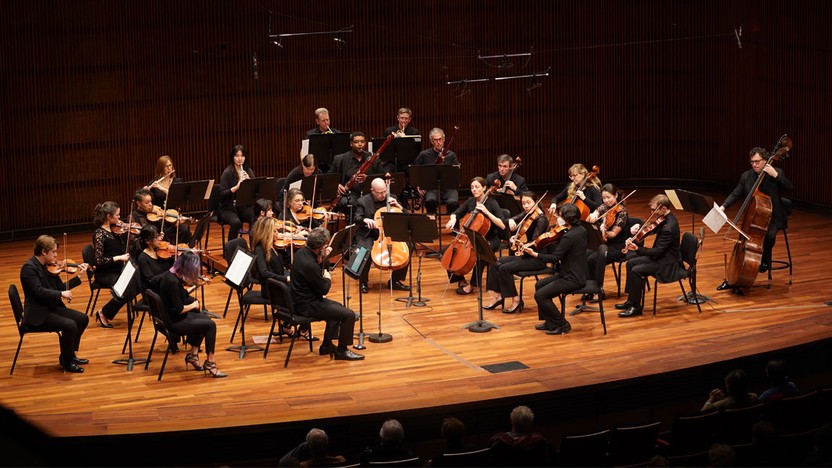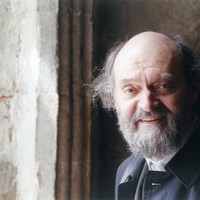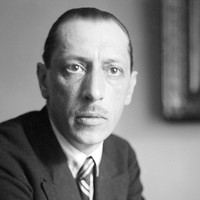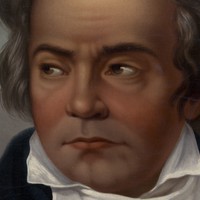Beethoven’s Fifth Symphony



Before the Estonian composer Arvo Pärt developed his hallmark sound — a simple but gut-wrenching style he calls “tintinnabuli,” from the Latin for “little bells” — he wrote strident neoclassical and serial works that bucked Soviet orthodoxy. Then he reached an artistic crisis in 1968, and over the next eight years he barely composed. His new style only emerged after detailed investigations of Gregorian chant and other early music, leading to a series of breakthrough scores from 1976-77, including Cantus in Memory of Benjamin Britten, Tabula Rasa and Fratres.
First performed by an Estonian early music ensemble in 1977, Fratres is built on an elegant framework of variations that allows it to be transported to any combination of instruments. This transcription by the German arranger and oboist Andreas Tarkmann spreads the chant-like theme, luminous counter-lines and steady drones among an ensemble of oboes, clarinets, horns and bassoons, punctuated by meditative strikes from the percussionist preparing each new variation. The title, Latin for “brothers,” underscores this music’s connection to monastic chant.
Aaron Grad ©2024
 Listen to Audio
Listen to Audio
By the time the world warmed up to the primitive force of Igor Stravinsky’s early masterpieces for the Ballets Russes (The Firebird, Petrushka and The Rite of Spring), the composer had already left Russia behind and moved on to more austere subjects and a neoclassical style. One area of sustained focus was ancient Greece and Rome, first in Oedipus Rex (1927) and continuing in the ballets Apollon musagète (1928), Persephone (1934), Orpheus (1947) and Agon (1957).
The commission for Apollon musagète (later shortened to Apollo) came from the American patron Elizabeth Sprague Coolidge, who asked Stravinsky to create a work for the 500-seat theater she had spearheaded at the Library of Congress in Washington, DC. There was room for only a small cast of dancers and musicians, which led Stravinsky to create a scenario for Apollo and three muses (out of the original nine) and a sparse accompaniment of strings. The ballet premiered on April 27, 1928, with choreography by a Ballets Russes alumnus, Adolf Bolm.
In Greek mythology, the god Apollo is associated with light and truth, as well as music and poetry, and the term Apollonian has come to describe art that exhibits order, balance, clarity and precision. When Stravinsky first played a piano transcription for Serge Diaghilev, the impresario behind the Ballets Russes immediately recognized the music’s Apollonian brilliance: “It is, of course, an amazing work, extraordinarily calm and with greater clarity than anything [Stravinsky] has done,” Diaghilev wrote to his partner. “Filigree counterpoint around transparent, clear-cut themes, … music not of this world, but from somewhere above.”
Aaron Grad ©2024
 Listen to Audio
Listen to Audio
Ludwig van Beethoven made his first sketches for the Fifth Symphony in 1804. He composed the bulk of the symphony in 1807–08 while working concurrently on the Sixth Symphony, and he introduced both works during a four-hour marathon concert in Vienna on December 22, 1808, at which the frigid temperatures and under-rehearsed orchestra made more of an impression than the immortal music heard there for the first time.
The Fifth Symphony comes from the heart of Beethoven’s “middle” period, a phase when his encroaching deafness changed his relationship to composing and performing, and when the elegant classicism of his early works gave way to a more focused and concentrated manner of writing. Rather than issuing flowing melodies, Beethoven’s quintessential works from this period build highly integrated forms out of compact, elemental materials.
The most famous musical nugget Beethoven ever conceived — perhaps the most recognizable motive ever penned by a composer — comes at the start of the Fifth Symphony, when the orchestra delivers four unadorned notes: three short repetitions of G dropping to a sustained E-flat, representing two notes from the home triad of C minor. This one motive fuels the entire first movement based in Beethoven’s favorite key for stormy and fateful music, and traces of it return later in the symphony.
The Andante con moto second movement features a double set of variations, alternating the development of two contrasting themes. Some of the accompanying rhythms echo the short-short-short-long rhythmic pattern from the first movement, contributing to the symphony’s organic cohesion.
The Scherzo retreads the central tonal conflict of the work, juxtaposing a moody first theme in C minor and a spry fugal section in C Major. A coda builds tension that releases directly into the concluding Allegro, which adds piccolo and trombones to the scoring for extra orchestral brilliance. With this grand finale, Beethoven’s Fifth completes its fateful journey to a triumphant resolution in C Major.
Aaron Grad ©2024
SPCO x University of Minnesota Collaboration
During the concert on Sunday, November 3, students from the University of Minnesota’s School of Music will perform side-by-side with the SPCO on the fourth movement of Beethoven's Symphony No. 5 at Ted Mann Concert Hall. As with all regular SPCO performances, student tickets are free to reserve. Learn more at thespco.org/studentsfree.
Get driving directions and find nearby parking.
Find dining options close to the venue.
View seating charts to find out where you'll be seating.
Get driving directions and find nearby parking.
Find dining options close to the venue.
View seating charts to find out where you'll be seating.
